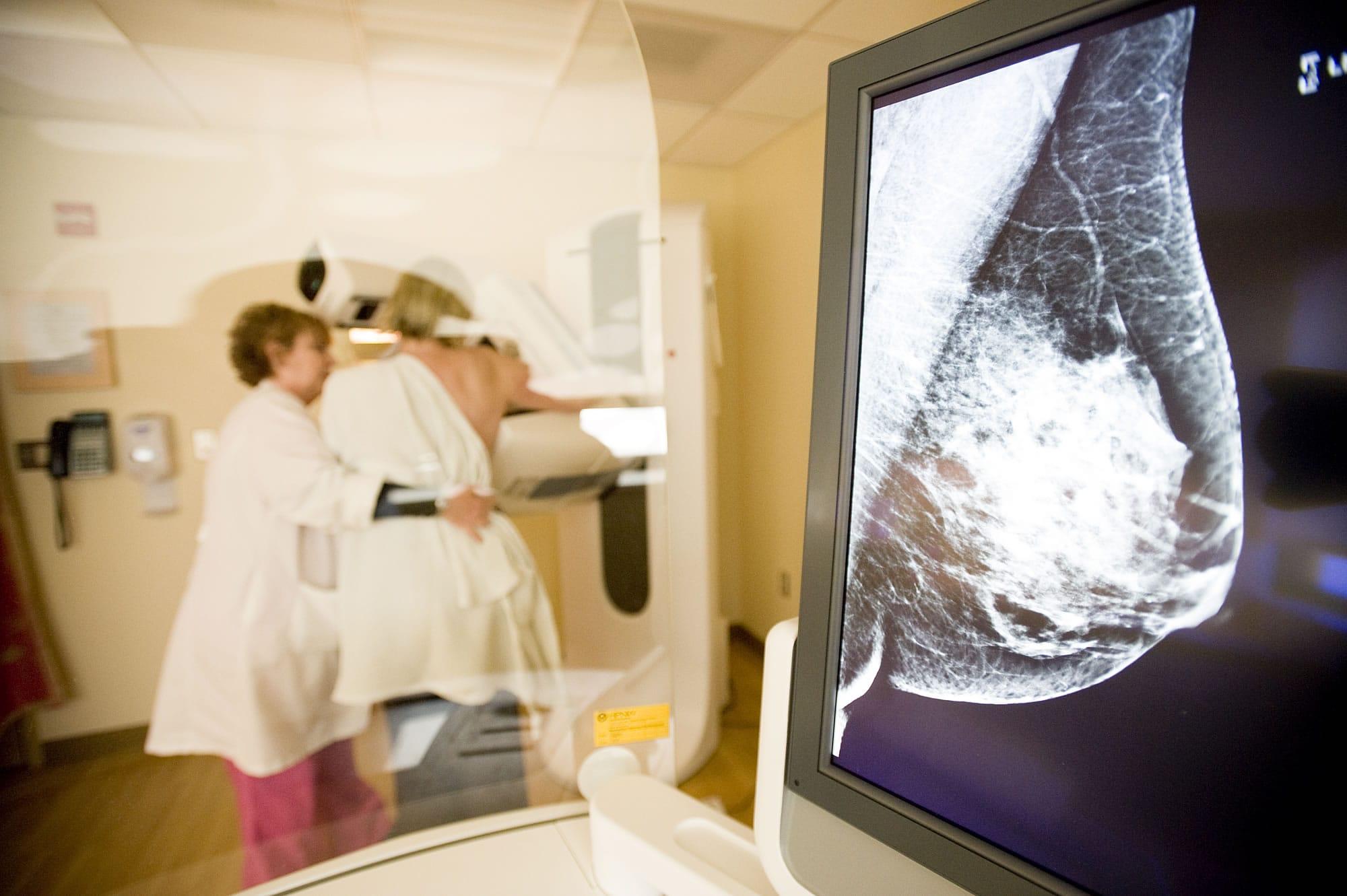Mammograms in Clark County have reached a whole new dimension.A third dimension, to be exact.
Since last year, the Kearney Breast Center at PeaceHealth Southwest Medical Center and The Vancouver Clinic’s Breast Care Center have introduced thousands of Clark County women to new 3-D mammography technology. And just last month, Legacy Salmon Creek Medical Center announced it was beginning to offer the 3-D technology at its Breast Health Center.
The technology provides radiologists with images of the breast, tissue layer by tissue layer. In addition, the images are crisper than traditional images. Two-dimensional images provide two flat images, one from the top of the breast and one from the side.
Two large research studies in the last year have found 3-D mammography technology reduces the number of false positives and detects more cancers earlier. The data that The Vancouver Clinic has gathered since it started using the technology last April have mirrored those findings, said Dr. Jennifer Ochsner, radiologist at the Breast Care Center.
“It has definitely lived up to its expectations,” Ochsner said.
With the 2-D mammogram, sometimes women are told to come back for additional tests if the original mammogram is inconclusive. The uncertainty and wait time for a final determination, which can take days or even a week, is stressful for patients, said Dr. Lawrence Rose, radiologist and medical director of the Kearney Breast Center.
“If we can use this technology and give them an answer the same day and not call them back for more tests, that’s a lot of stress off them,” Rose said.
While anyone can benefit from the new equipment, the 3-D technology is particularly beneficial for use on patients with dense breast tissue because it captures images of various layers of breast tissue.
The Kearney Breast Center, which began using the new technology in February 2012, uses the 3-D technology on any patient with dense breast tissue. Most other patients receive 2-D mammograms unless they are willing to wait for the new machine to be available, Rose said.
The Vancouver Clinic also directs patients with the denser tissue toward the 3-D machine, however, anyone can request the 3-D imaging, Ochsner said.
Since last April, The Vancouver Clinic has used the 3-D technology for screening and diagnostics about 11,000 times at its Northeast 87th Avenue office, said Don Moore, manager of imaging services at The Vancouver Clinic. This fall, The Vancouver Clinic plans to add the technology at its Salmon Creek office.
At Legacy, the 3-D technology replaced the conventional 2-D equipment. That means every woman who visits the Breast Health Center receives a 3-D mammogram.
“This investment in technology is about better serving patients, making sure they get the highest quality of care possible,” said Jonathan Avery, chief administrative officer at Legacy Salmon Creek Medical Center, in a news release.
The new technology does result in slightly more radiation exposure for the patient. However, the equipment is still well below federal limits on exposure for mammograms and emits less radiation than the amount a person receives each year from the environment, the radiologists said.
The U.S. Food & Drug Administration approved the first 3-D mammography device in February 2011.
“This is an exciting time in breast imaging,” Ochsner said. “It’s everything I had hoped it would be.”





